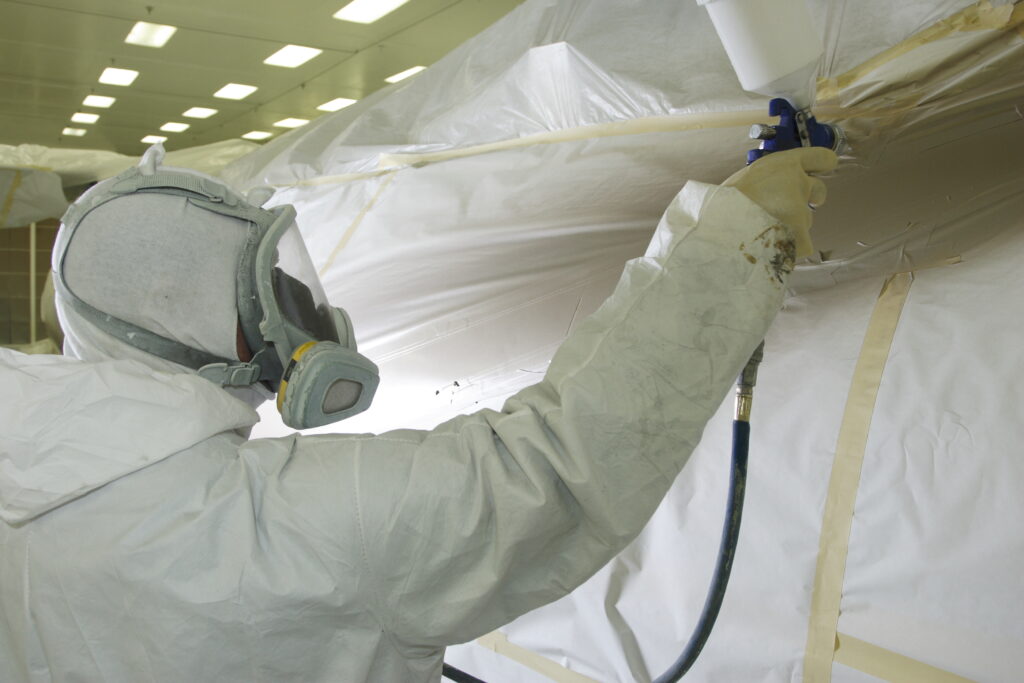Aircraft painting goes beyond the aesthetic appeal
Aircraft painting is a crucial aspect of the aviation industry that goes beyond the aesthetic appeal of planes. Paint provides an appealing finish to an aircraft and protects it from environmental damage and corrosion. Therefore, airlines must understand the importance of aircraft painting and the processes involved in achieving a long-lasting, high-quality finish.
New United Goderich has a paint department and technicians that will use the aircraft as their canvas to create the perfect look that our clients envisioned.
Nugi uses a wide variety of high-quality Sherman-Williams Aerospace and AkzoNobel paint products to bring your design to life.
“Our beautiful, elegant and creative design will last for years, as all of our paint contracts include a standard one-year limited warranty.” Explains our painting department.

STEP BY STEP
The process of aircraft painting starts with the preparation of the surface. Before the paint is applied, the aircraft’s surface must be clean and sanded to remove any dirt, rust, or corrosion. This process ensures that the paint adheres to the surface properly and lasts for an extended period. It is worth noting that aircraft surfaces are different from typical automobile surfaces. As such, specialized techniques and equipment are required to prepare the surface correctly.
Once the surface is ready, the aircraft painting process can begin. The first step is the application of a primer to the surface. The primer acts as an adhesive and helps the paint stick to the surface. It also provides a base coat that enhances the paint’s colour and appearance. The primer is typically applied in multiple thin coats to ensure an even finish.
The next step is the application of the paint. Aircraft paints are formulated to withstand harsh weather conditions, UV radiation, and temperature extremes. The paint is applied using specialized spraying equipment, ensuring an even coat on all surfaces. This process requires a high skill level, as the operator must be careful to avoid drips, bubbles, or uneven coverage.
After the paint has been applied, the aircraft is allowed to dry in a controlled environment. The drying process can take a few hours to several days, depending on the type of paint used, the ambient temperature, and the humidity levels.
Once the paint has dried, the aircraft undergoes a final inspection to ensure the finish is even and meets the airline’s standards. Any imperfections are corrected, and the aircraft is polished to enhance its shine and appearance.
In addition to the cosmetic benefits of aircraft painting, there are other practical advantages. For example, paint can protect the aircraft’s surface from the corrosive effects of saltwater, dirt, and other environmental factors. It can also help to reduce drag and improve the plane’s aerodynamics, leading to better fuel efficiency and lower operating costs.
Why should we paint using all these details?
Aircraft painting is an essential process in the aviation industry that goes beyond just the appearance of the aircraft. It is critical in protecting the aircraft from environmental damage and corrosion while providing an aesthetically pleasing finish. However, the process requires a high level of skill and specialized equipment, and airlines should prioritize the quality of their aircraft painting to ensure that their planes remain in top condition for years to come.
